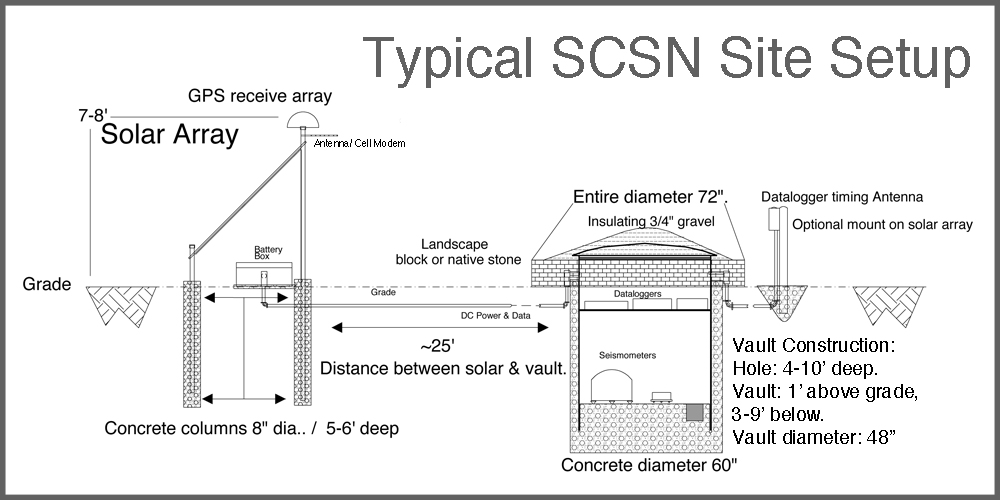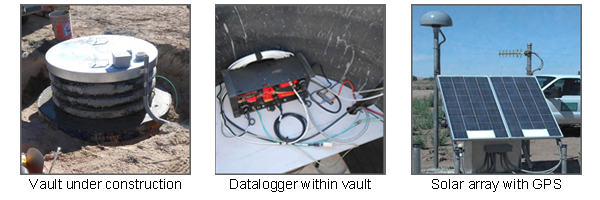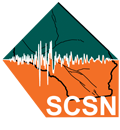SCSN has more than 400 seismic stations in Southern California, and imports over 150 stations from 14 other networks, creating one of the densest seismic networks in the world.

Each SCSN station requires many hours of planning, during which time several site selection factors are accounted for:
- local station density
- environmental noise
- security
- power availability
- telemetry
- permit cost/attainability
- ease of access
- geology
For example, if a large area of the Mojave Desert has very few stations, SCSN may choose to install a station in the least dense portion of this area. In addition to density, stations are separated into regional areas called subnets. Subnets are used to break up the network into many smaller networks, each of which is designed to trigger when a particular number of stations detect an event. This enables SCSN to regularly detect small events.
To accurately detect ground motion, a seismic station needs a good connection to the ground. Stations are installed either by placing the equipment in the basement of a building, by digging a hole into the ground or using a deeper borehole installation.
For a shallow hole installation a large plastic tub or steel culvert pipe is often used to house the equipment. Inside of the tub or pipe, the sensor (or in many cases sensors) is/are placed at the base and leveled and oriented. The lid is placed on the tub, and dirt or cement are placed above. A cable runs from the sensor to a datalogger, which then reaches the telemetry equipment. Some circuits are converted to a radio or microwave signal, while others are sent via the internet.

The Earth is remarkably noise, and environmental variables such as noise from wind or highway traffic have to be taken into account when selecting a station site. The ideal site selection is far enough from roads to not detect the noise from passing vehicles, but close enough that the site is still accessible.
Site security is very important, as sites that are in unsecured areas have been vandalized in the past. A power source is also an important factor, since a site in an area without power needs a solar array and regular battery replacement. Each station has a back-up power system; if the central power fails the site will be able to rely on alternate power for several days to weeks if needed.
Telemetry has become a very important factor when installing a seismic station, as reliable and fast systems are required for accurate, real-time processing. Many methods of telemetry are used: microwave transmissions, radio signals, the internet, telecommunication (cell) and earthworm systems are all used. This variety insures a healthy network in case one particular method of telemetry fails. In addition to these methods, many utility companies share their networks with SCSN, which allow the data to be transmitted via private networks owned by gas, electric, water, and phone utility companies. In exchange they receive products generated by SCSN: ShakeMaps, CISN Display, and paging devices are provided to many first responders at utility companies.



